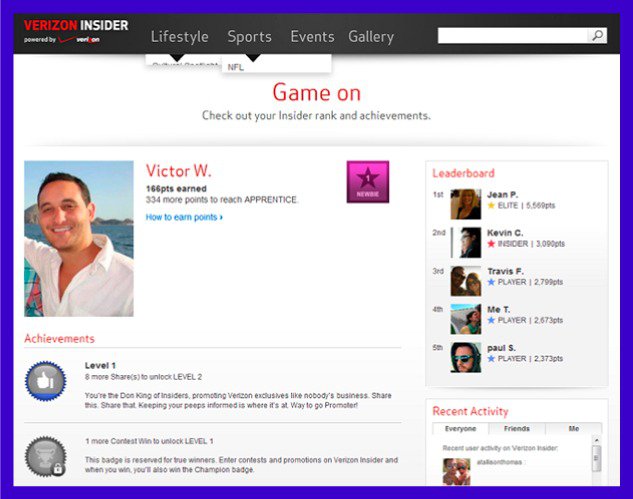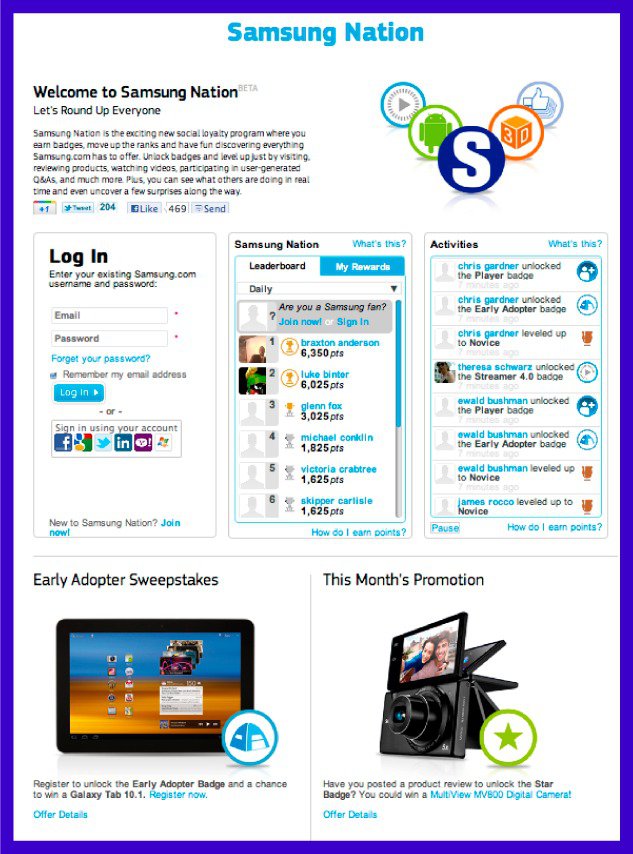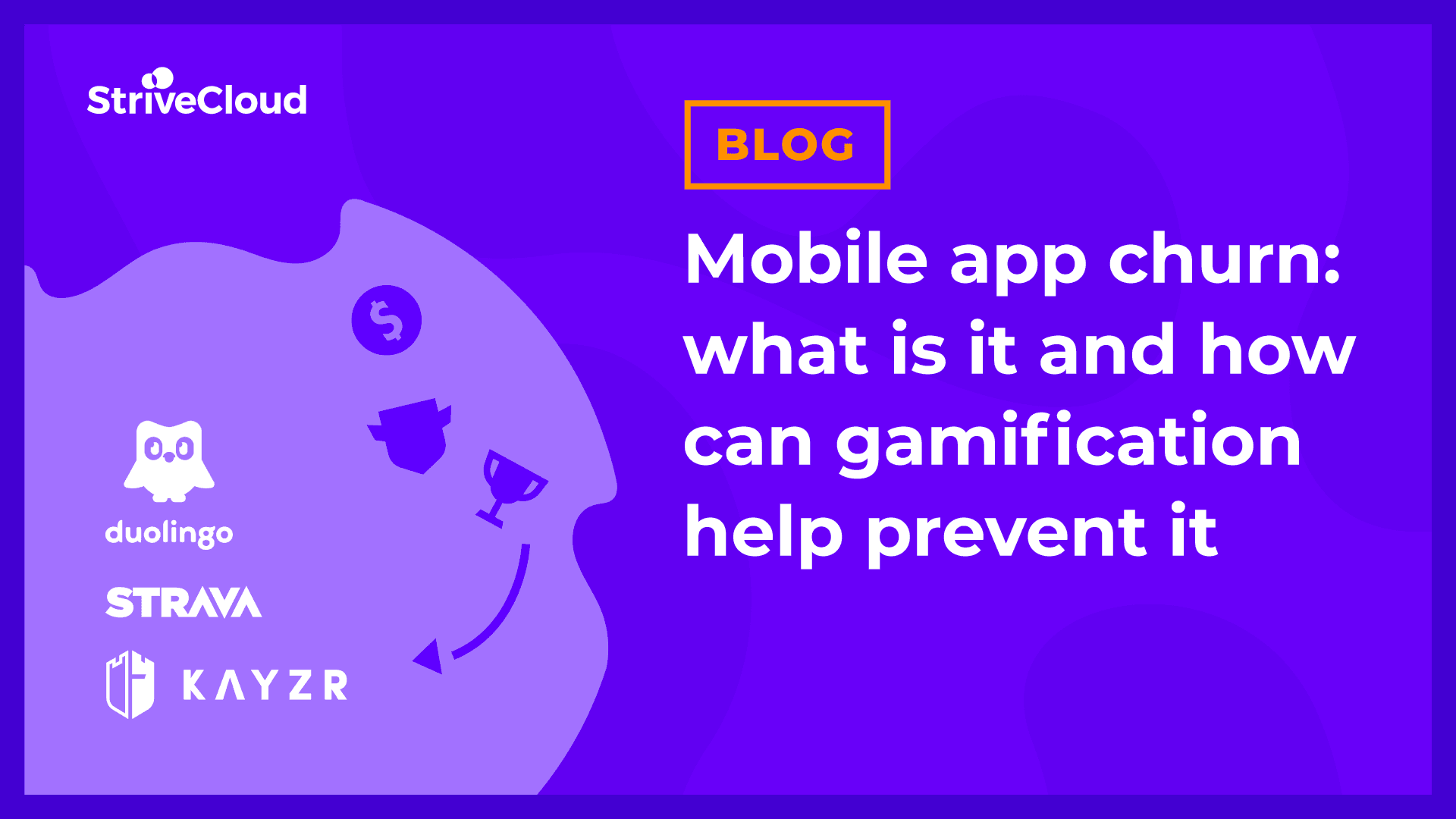

How to use gamification for improved loyalty in telecom
How to use gamification for improved loyalty in telecom
The telecom industry used to be on top of their markets. However, increasing competition from digital alternatives like WhatsApp and WeChat are changing consumer behaviors and loyalty. Telecom brands are forced to reinvent themselves in order to stay relevant to consumers and keep app engagement high. A report by strategy consultant Accenture found 77% of consumers are no longer loyal to any particular brand. This makes building loyalty and differentiation all the harder.
In 2019, over half of consumers canceled a phone, internet, or TV subscription. 64% cited an ongoing bad experience as the primary reason. In today’s world, you can’t afford bad experiences. Bad news spreads fast, with 72% of people sharing bad experiences with friends, family, and colleagues.
So how do you create an experience that delights your customers, without over-investing into expensive loyalty programs that don’t get enough engagement?
Here’s what we’ll get into:
- Why quick loyalty fixes won’t do the job
- Gamification – the holy grail of user engagement & loyalty
- Telecom brands that have succeeded with gamification
- A plug-in gamification tool that differentiates your brand and builds loyalty
Why quick loyalty fixes won’t do the job
The telecom industry has been struggling with churn for a while. 61% of telecom companies have initiatives in place to increase loyalty and engagement.
According to TechSee’s Telecom Churn Survey, the most common tactics were to offer the dissatisfied customer a discount (48%) or to offer an apology or explanation about the reason for poor service (37%). However, not all customers are satisfied with this approach.
TechSee 2019 Telecom Churn Survey - "They should have offered better service and showed they valued me as a customer to begin with, rather than waiting till I’d had enough and canceled my service to realize their level of service was unacceptable. If there is room to offer better rates or better service, that should happen before I’m fed up and looking for better providers."
Additionally, most customers weren’t even aware of any loyalty programs until they decided to cancel their subscriptions. Needless to say, this strategy isn’t sustainable. With operating costs increasing between 10 to 20%, reactive service just doesn’t work. If you want to truly change customer behavior and brand sentiment, you need to differentiate through your customer experience.
Consulting firm McKinsey found that improvements in the customer experience increase revenues by 15% while also lowering the costs to serve by 20%. Sounds like a dream? Keep on reading!
Gamification – The holy grail of user engagement and loyalty
What is gamification?
Gamification is the strategic process of inserting game elements into an experience to boost user activity and drive engagement and loyalty. It’s not the same as turning things into a game, but rather using what makes a game fun and engaging to improve the customer experience.
How does gamification work?
A successful gamification strategy plays on the users' intrinsic motivations. These are activities we do because we want to as the activity in itself is fun and enjoyable. To build an experience that achieves this you need to follow these 3 steps:
- Analyze customer and user data to create a gamified customer journey that supports business goals
- Leverage game elements to influence desired behaviors
- Reward behaviors that have a direct impact on business goals
If you want to learn more about gamification: here’s what you need to get started!
How can Telecom companies use gamification?
Changing a few things to your already existing loyalty efforts will help you retain customers at scale. Instead of an expensive loyalty program, you can create a personalized reward system that supports your business goals. This way gamification helps you to not only save costs but also grow user activity.
Check out how a few changes helped Kayzr cut retention costs while increasing daily active usage by 60%!
Telecom brands that have succeeded with gamification
Verizon connects social media & gamification to boost app engagement
Verizon, the largest wireless telecommunications provider in the US faces the same problems of all telecom providers: low user engagement. That’s why they decided to ramp up app engagement on their Verizon Insider Web portal using gamification.
The web portal is a hub for events, competitions, sponsorships, and other social initiatives. Users can collect points by taking actions on the site such as attending events, playing games, or writing reviews. With those points, users can earn badges and join public leaderboards to win exclusive promotions.

This showcases Verizon's gamified web portal, which uses badges and leaderboards to drive user participation and engagement effectively.
Over 50% of users participated in the new gamification features. These simple platform additions generated 15% more page views and increased log-ins to the site by 30%.
In addition to the gamification elements, Verizon personalized user experiences based on interests and location. They also added an option to log in with your social accounts. Users who did the latter spent on average 30% more time on the site.
Samsung launches the first gamified corporate site
Samsung was one of the first corporate brands to launch a gamified corporate website back in 2011. In an effort to better engage and appreciate their online community they launched Samsung Nation. Basically a social loyalty program on steroids.
Members of Samsung Nation were able to win, engage, and compete with other ‘nationals’ to win badges, points, and other rewards.
Similar to Verizon’s program, Samsung rewards many forms of user participation. To push the user experience forward they created missions that support Samsung’s business goals such as “register and review Samsung products”. In return, users could unlock new badges and more challenges!

Samsung's Nation program effectively uses missions and challenges to align user actions with key business goals, driving both engagement and product interaction.
A plug-in gamification tool that differentiates your brand and builds loyalty
Easily embed gamification elements through StriveCloud’s plug-in tool built for customer retention and app engagement. You can link it to your website, web, and mobile apps to create a cohesive customer experience and hook users across channels.
The gamification tool activates users by adding personalized milestones and challenges. You can use leaderboards to fuel an innate sense of competition, and differentiate your brand, while rewarding users for active participation to keep them coming back.
The right mix of gamification elements is crucial here. A great gamified journey is one that has challenging goals just within reach. You can add leveling systems and progress bars to serve as visual feedback to trigger the natural human desire for progress, and keep users going forward.
Not sure where to start? Let’s set up a free workshop to craft your very own gamification strategy!
Key take-aways
Consumer behavior towards telecommunication companies is changing. With digital alternatives on the rise, telecom brands need to differentiate in order to stay relevant. 77% of consumers are no longer loyal to one particular brand. This makes loyalty an important issue to tackle for all companies.
Here are the main findings of our article:
Reactive customer discounts and rewards are not sustainable
Customers don’t want excuses for bad service. They want a seamless experience that already rewards them for being a good customer, not as a last resort.
Find what makes your customers tick to boost app engagement and loyalty
The gamified customer journey should be tailored to users' motivations, behaviors, and preferences. User goals should be challenging enough to inspire action, and achievable enough to trigger motivation. Once you understand how to motivate customer behavior, you can keep them coming back to your service.
A gamified experience differentiates your brand
The right gamification tool can make your customer journey fun and engaging. It will make you stand out and allows you to encourage customer behaviors that support your goals. You can even reward users to invite their friends to use your service or spread positive sentiment.
Need help implementing your own gamification strategy? Check out our plug-in gamification tool to supercharge your customer loyalty!
Related Posts

Mobile app churn: what is it and how can gamification help prevent it
Many businesses are launching apps to get the needed eyeball time from their audience, but lots of them are failing at keeping consumers engaged. Why? Because they are either not tracking mobile app churn or aren't solving the problems that cause users to abandon their apps. Luckily, there are solutions to tackle the engagement challenge. Gamification, for instance.


